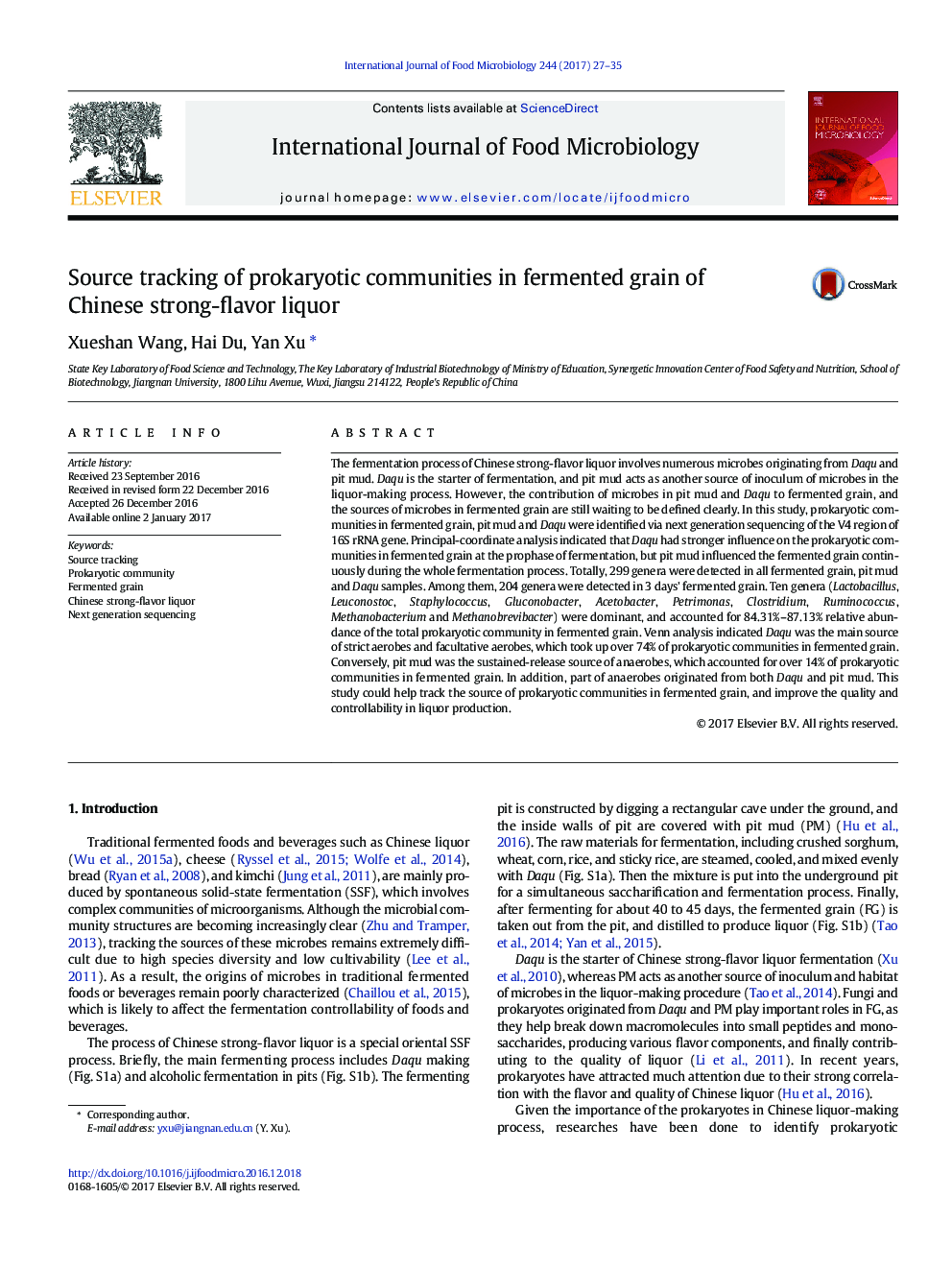| کد مقاله | کد نشریه | سال انتشار | مقاله انگلیسی | نسخه تمام متن |
|---|---|---|---|---|
| 5740913 | 1616539 | 2017 | 9 صفحه PDF | دانلود رایگان |
- This study tracked the sources of prokaryotes in fermented grain.
- Daqu was the main source of aerobes and facultative aerobes.
- Pit mud acted as the sustained-release source of anaerobes in fermented grain.
The fermentation process of Chinese strong-flavor liquor involves numerous microbes originating from Daqu and pit mud. Daqu is the starter of fermentation, and pit mud acts as another source of inoculum of microbes in the liquor-making process. However, the contribution of microbes in pit mud and Daqu to fermented grain, and the sources of microbes in fermented grain are still waiting to be defined clearly. In this study, prokaryotic communities in fermented grain, pit mud and Daqu were identified via next generation sequencing of the V4 region of 16S rRNA gene. Principal-coordinate analysis indicated that Daqu had stronger influence on the prokaryotic communities in fermented grain at the prophase of fermentation, but pit mud influenced the fermented grain continuously during the whole fermentation process. Totally, 299 genera were detected in all fermented grain, pit mud and Daqu samples. Among them, 204 genera were detected in 3Â days' fermented grain. Ten genera (Lactobacillus, Leuconostoc, Staphylococcus, Gluconobacter, Acetobacter, Petrimonas, Clostridium, Ruminococcus, Methanobacterium and Methanobrevibacter) were dominant, and accounted for 84.31%-87.13% relative abundance of the total prokaryotic community in fermented grain. Venn analysis indicated Daqu was the main source of strict aerobes and facultative aerobes, which took up over 74% of prokaryotic communities in fermented grain. Conversely, pit mud was the sustained-release source of anaerobes, which accounted for over 14% of prokaryotic communities in fermented grain. In addition, part of anaerobes originated from both Daqu and pit mud. This study could help track the source of prokaryotic communities in fermented grain, and improve the quality and controllability in liquor production.
Journal: International Journal of Food Microbiology - Volume 244, 6 March 2017, Pages 27-35
